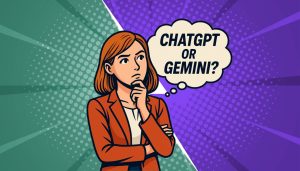Customer experience is not just a transactional occurrence. The customer experience journey spans the entire lifecycle of the customer’s interaction with the brand.
Let’s take an example of a small-town coffee shop. Walking down the street, one sees that a new shop opened in town. The person then might try a cup of coffee there before work, meet a friend for a chat on a weekend, or order a few sweets to take home. He or she can then recommend the shop or tell someone it’s not worth a visit. But any time this customer interacts with the shop and its owners, talks about it, or patrons it – these are all elements of this specific customer experience journey.
Understanding the customer experience journey as a business owner is an important part of business operations. Knowing what each customer goes through when interacting with a brand allows the business to know what improvements, if any, can be implemented. It can determine what works and what doesn’t. If a business has a picture of what customers think, do, and feel throughout their entire experience with our company – before, during, and after the actual transaction – it can adjust and tailor its operations to make that experience more satisfying.
The customer journey mapping process is such an important part in planning for an amazing customer experience. Success doesn’t happen by accident. The journey map is part of creating deliberate success.
— Shep Hyken (@Hyken) July 3, 2018
In this comprehensive guide, we delve into the intricacies of mastering the customer experience journey. We provide valuable insights, practical tips, and real-world examples to help you elevate your customer experience game to new heights.
Customer Journey vs. Customer Experience
What is teh difference between the customer journey and the customer experience? While often used interchangeably, these two terms have distinct meanings that are crucial to grasp in order to effectively manage and improve the customer experience.
Customer Journey
The customer journey refers to the series of touchpoints and interactions that a customer goes through while interacting with a brand. It encompasses all the stages, from the initial awareness and consideration to the final purchase and ongoing post-purchase support. Implementing headless ecommerce solutions can significantly improve these areas by decoupling the front-end user interface from the back-end commerce functionality, enabling more agile content delivery and seamless customer interactions across multiple platforms. Each touchpoint plays a significant role in shaping the customer’s perception and decision-making process. For example, a customer may first become aware of a brand through a social media advertisement, then proceed to explore the brand’s website, read customer reviews, and finally make a purchase. The customer journey is like a roadmap, guiding customers from the first encounter to the ultimate goal.
Customer Experience
On the other hand, the customer experience encompasses the overall perception and feelings that a customer has towards a brand throughout their entire journey. It goes beyond the individual touchpoints and focuses on the holistic experience. The customer experience is influenced by various factors, such as the brand’s values, product quality, customer service, and even the physical environment in which the interactions take place. It encompasses not only the touchpoints but also the emotions, expectations, and satisfaction levels associated with each interaction.
Customer Experience Journey Compiles of Customer Experiences
Understanding this difference is essential because a successful customer experience journey cannot be achieved solely by optimizing individual touchpoints but by creating a cohesive and delightful experience that spans the entire customer journey. Brands that prioritize the customer experience understand that every touchpoint is an opportunity to create a positive impression and build long-term loyalty.
Imagine a customer who is in the market for a new smartphone. The journey begins with researching different brands and models online. They read reviews, compare features, and seek recommendations from friends. Once they have narrowed down their options, they visit physical stores to see and feel the devices in person. The sales staff’s knowledge, helpfulness, and willingness to address their concerns greatly influence their experience. Finally, the customer makes a purchase and begins using the smartphone. The post-purchase support, such as prompt customer service and software updates, further shapes their overall experience.
By understanding the customer journey and focusing on delivering an exceptional customer experience at every stage, brands can differentiate themselves from the competition and foster customer loyalty.
5 Stages of Customer Journey Experience
While every company decides how to draw a map of the customer experience journey, generally speaking, there is a defined universal structure. There are five stages that make up the customer journey experience. By understanding these stages, businesses can gain insights into the crucial touchpoints that influence a customer’s perception. Then they can make informed decisions on how to enhance the experience.
Stage 1: Awareness
During the awareness stage, customers become acquainted with a brand, product, or service. This is the initial point of contact where the business aims to capture their attention and create a positive first impression.
Stage 2: Consideration
Once customers are aware of the brand, they enter the consideration stage, where they evaluate their options and compare different offerings. At this stage, it is crucial to provide them with detailed information, personalized recommendations, and social proof to help them make an informed decision.
Stage 3: Decision
The decision stage is where customers make their final purchase decision. This stage requires a seamless and effortless buying process, transparent pricing, and compelling incentives to drive conversion.
Stage 4: Service
After the purchase, customers enter the service stage. They expect timely and effective support, clear communication, and a personalized approach to address their inquiries or concerns. This stage plays a crucial role in establishing customer loyalty and advocacy.
Stage 5: Loyalty
The loyalty stage encompasses the post-purchase experience, where a company aims to build a long-term relationship with its customers. This involves maintaining open lines of communication, providing exclusive offers, and continuously exceeding expectations to foster customer loyalty and advocacy.
A Step-by-Step Guide to Crafting the Perfect Customer Journey
Step 1: Define Your Customer Personas
Creating detailed customer personas is essential to tailor your customer experience to the specific needs, pain points, and preferences of your target audience. By understanding their demographics, motivations, and behaviors, you can personalize your touchpoints and deliver a more relevant and engaging experience.
Who is your customer? Find out, and you get an insight into what they wish, feel, desire, and seek. Knowing your customers can help appeal to them on a deep, personal level. And we all know from our own experience as consumers – personalized customer experience brings deeper satisfaction and connection to a brand.
Step 2: Map Your Customer Journey
Customer journey mapping involves visualizing the entire customer journey, from the first touchpoint to the final interaction and beyond. This exercise helps identify pain points, opportunities for improvement, and areas where you can create memorable experiences.
To create an effective customer journey map, start by listing all the touchpoints your customers encounter. These can include website visits, social media interactions, email communications, in-store experiences, and more. Then, plot each touchpoint along the customer journey stages we discussed earlier.
For businesses with websites, analytics can come in quite handy here.
Step 3: Identify Pain Points and Opportunities
By analyzing your customer journey map, you can identify pain points where your customers may face challenges or frustrations. These pain points can range from slow website load times to inconsistent information across channels. Simultaneously, you can identify opportunities to enhance the customer experience, such as personalized recommendations at the consideration stage or proactive post-purchase support.
Step 4: Optimize Touchpoints
Once you have identified the pain points and opportunities, it’s time to optimize the individual touchpoints within each stage. This can involve streamlining the checkout process, improving website navigation, personalizing product recommendations, enabling self-service options, or implementing chatbots for efficient customer support.
Step 5: Track, Measure, and Iterate
Measuring the effectiveness of your customer experience initiatives is essential for continuous improvement. Set key performance indicators (KPIs) that align with your customer experience goals. These include customer satisfaction scores, Net Promoter Score (NPS), or customer retention rates. Use Net Promoter Score software to regularly track these metrics and iterate your customer journey based on the insights gained.
Software Tools for Visualizing Customer Experience Journey Maps
Visualizing and managing your customer experience journey maps can be made easier with the help of dedicated software tools. These tools offer intuitive interfaces, collaboration features, and analytical capabilities to help you map, analyze, and optimize your customer experience efforts. Here are three popular tools that you can consider:
Tool 1: Customer Experience Journey Mapping Software
This software focuses on customer journey mapping, offering templates, drag-and-drop functionality, and data visualization capabilities to map your customer journey stages and touchpoints. Examples of such tools include Xmap, UXPressia, and Smaply.
Tool 2: Customer Relationship Management (CRM) Software
CRM software, such as Salesforce or HubSpot, is designed to manage customer relationships and interactions. These platforms often include features for customer journey mapping, allowing you to visualize and track customer touchpoints within the broader context of your CRM system.
Tool 3: Experience Management Software
Experience management software, like Qualtrics, Medallia, or Adobe Experience Platform, offers a comprehensive suite of tools for collecting customer feedback, measuring satisfaction, and visualizing customer journey maps. These tools often integrate with other customer data sources, enabling a holistic view of the customer experience.
Measuring and Evaluating Customer Experience for Continuous Improvement
Measuring and evaluating the customer experience is crucial for understanding how your initiatives impact customer satisfaction, loyalty, and business outcomes. Let’s explore some key metrics and methodologies to assess and improve your customer experience:
Customer Satisfaction Score (CSAT)
The Customer Satisfaction Score (CSAT) is a widely used metric that measures customer satisfaction with a specific interaction or touchpoint. It usually takes the form of a survey question asking customers to rate their satisfaction on a scale (e.g., from 1 to 5).
Net Promoter Score (NPS)
The Net Promoter Score (NPS) is a metric that measures the likelihood of a customer recommending your brand to others. It is based on a simple question: “On a scale of 0 to 10, how likely are you to recommend our brand to a friend or colleague?” Customers are then segmented into promoters (score 9-10), passives (score 7-8), and detractors (score 0-6).
Customer Effort Score (CES)
The Customer Effort Score (CES) measures the ease of conducting business with your brand. It aims to gauge how much effort customers perceive is required to accomplish a specific task or resolve an issue. Customers are usually asked to rate their effort on a scale (e.g., from 1 to 5).
In addition to these metrics, qualitative methods such as customer feedback, focus groups, and usability testing can provide valuable insights into the customer experience and help uncover areas for improvement.
Example of Customer Experience Journey Map
Customer journey mapping plays a crucial role in a company’s understanding of a customer’s journey. Here is an example of one:

This visual representation showcases the different stages of the customer journey, including awareness, consideration, decision, service, and loyalty, as well as the touchpoints, emotions, and actions associated with each stage. Such maps serve as a tangible reference point for aligning customer experience initiatives and driving strategic improvements.
Once a company creates a customer experience journey map, it can focus on specific aspects of the journey. It can work on improving specific customer experiences.
What is Customer Experience?
As we discussed, customer experience refers to the overall perception, emotions, and interactions that a customer has with a brand throughout their entire journey. Let’s explore a few real-world examples of companies that have excelled in delivering exceptional customer experiences:
Example 1: Disney
Disney is renowned for its unparalleled customer experiences. From the moment customers step into the theme parks, they immerse themselves in a magical world defined by attention to detail, exceptional service, and unforgettable moments. Disney’s commitment to creating a memorable customer journey is evident in every touchpoint, from the friendly cast members to the immersive attractions and top-notch entertainment. The company has succeeded in the area of customer service (among other things) so much, that it created an organization – Disney Institute – that teaches others how to achieve similar heights in customer experience.
Related Read: Disney Customer Experience
Example 2: Zappos
Zappos, the online shoe and clothing retailer, is often cited as a prime example of customer-centricity. Their customer experience is built on a foundation of outstanding customer service, exemplified by their legendary support team that goes above and beyond to delight customers. Zappos understands that happy customers lead to repeat business and word-of-mouth recommendations.

Example 3: Amazon
No list of exceptional customer experiences would be complete without mentioning Amazon. The e-commerce giant has revolutionized the customer journey by continuously raising the bar for convenience and efficiency. From one-click ordering to fast shipping and hassle-free returns, Amazon has transformed the online shopping experience and set new standards for customer-centricity.

Example 4: Ritz-Carlton
Ritz-Carlton is synonymous with luxury and excellence in customer service. The hotel chain’s legendary “Ladies and Gentlemen” service philosophy focuses on anticipating and exceeding guest expectations. From personalized greetings to thoughtful gestures, Ritz-Carlton consistently delivers exceptional experiences that leave a lasting impression on their guests.
These examples demonstrate that delivering exceptional customer experiences is not limited to a specific industry or business size. Regardless of your niche, prioritizing the customer journey and investing in creating memorable experiences can be a differentiating factor that drives customer loyalty, advocacy, and ultimately, business success.
What is a customer success journey?
A Customer Success Journey is the path your customers take from the moment they start working with you to the point where they achieve their goals using your product or service. It’s all about helping them succeed and making sure they stay happy along the way.
The Key Steps:
- Getting Started (Onboarding)
- Help customers get up and running smoothly.
- Think: welcome emails, tutorials, or a quick intro call to set things up.
- Getting Comfortable (Adoption)
- Show them how to get the most out of your product.
- Share tips, resources, or just check in to see how it’s going.
- Seeing Results (Value Realization)
- Help them reach the goals they came to you for.
- Celebrate their wins and make sure they’re getting the value they expected.
- Keeping Them Happy (Retention)
- Stay connected and solve problems before they become big.
- Show them you care about their experience.
- Helping Them Grow (Expansion)
- Share new ways your product or service can help them.
- Maybe it’s a new feature or an upgrade they’ll love.
- Staying Together (Renewal)
- Make it easy for them to stick with you long-term.
- Remind them how much they’ve achieved with your help.
Why It’s Important
- Happy customers stick around.
- They’re more likely to buy more.
- They tell others about you.
The Customer Success Journey is about building trust, supporting your customers, and creating a relationship where everyone wins.
Customer Experience Journey
Mastering the customer experience journey is a multifaceted endeavor that requires a deep understanding of your customers, meticulous journey mapping, optimization of individual touchpoints, and continuous measurement and improvement. By prioritizing the customer experience, you can differentiate your brand, foster customer loyalty, and unlock new business opportunities in today’s competitive landscape. Use this comprehensive guide as your roadmap to craft exceptional customer experiences that leave a lasting impact on your customers.




